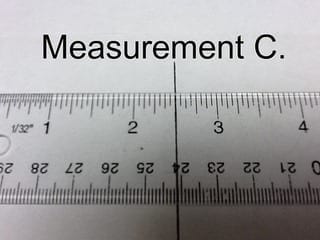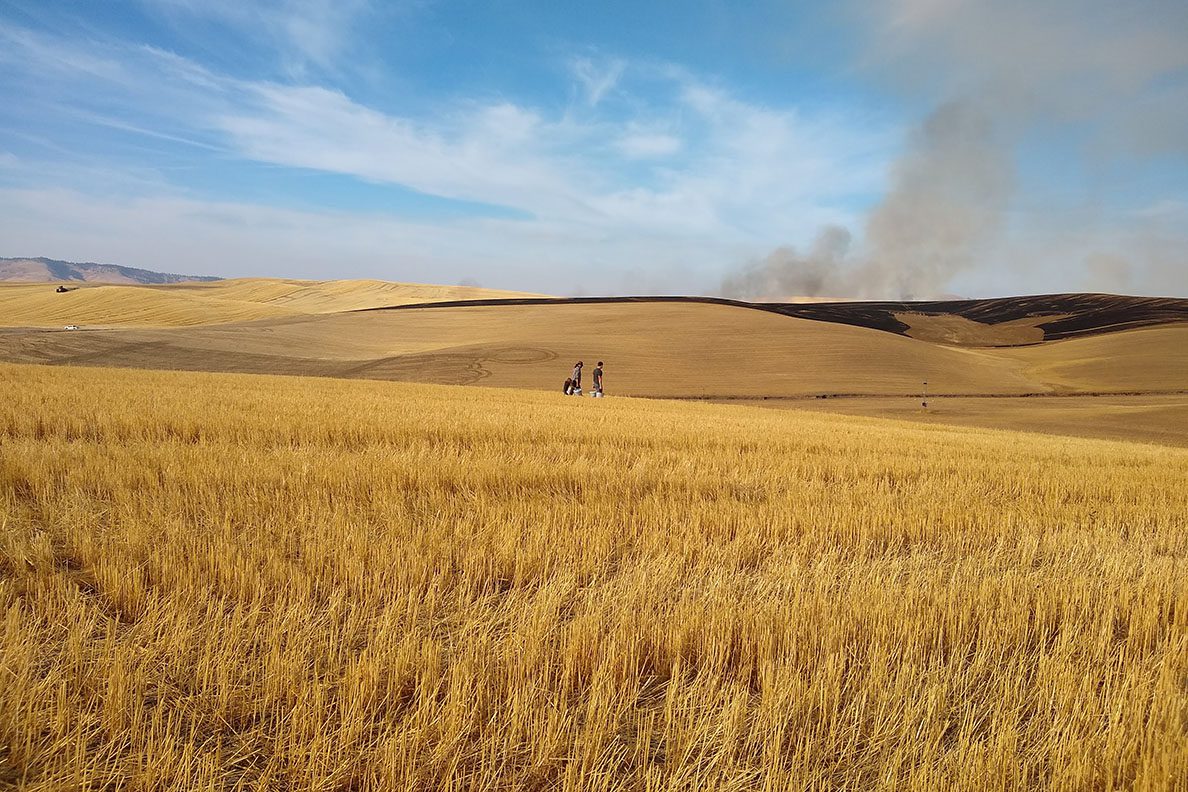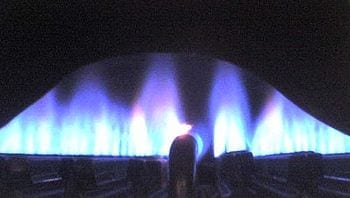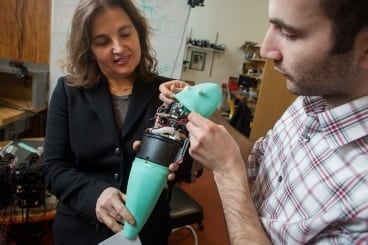
A University of Southampton researcher has helped to develop a wireless network of sensors that is set to revolutionise soil-based salinity measuring.
Dr Nick Harris, from Electronics and Electrical Engineering, worked with a group of professors from the University of Western Australia (UWA) to produce the revolutionary sensor that can carry out non-destructive testing of soil samples.
The sensor is capable of measuring the chloride (salt) in the soil moisture and linking up with other sensors to create a wireless network that can collate and relay the measurement readings. The network can also control the time intervals at which measurements are taken.
The sensor is placed in the soil and measures the chloride levels in the soil moisture in a non-destructive way. These chloride levels make up a high proportion of the overall soil salinity.
Dr Harris says: “Traditionally, soil-based measurements involve taking samples and transporting them to the laboratory for analysis. This is very labour and cost intensive and therefore it usually means spot checks only with samples being taken every two to three months. It also doesn’t differentiate between chloride in crystallised form and chloride in dissolved form. This can be an important difference as plants only ‘see’ chloride in the soil moisture.
“The removal of a soil sample from its natural environment also means that the same sample can only be measured once, so the traditional (destructive) method is not suited to measuring changes at a point over a period of time.”
The new sensors are connected to a small unit and can be ‘planted’ in the ground and left to their own devices. The limiting factor for lifetime is usually the sensor. However, these sensors are expected to have a lifetime in excess of one year. The battery-powered unit can transmit data and information by short range radio, Bluetooth, satellite or mobile phone network, as well as allowing data to be logged to a memory card to be collected later.
The novel device allows up to seven sensors to be connected at a time to a single transmitter allowing multi-point measurements to be simply taken.
Dr Harris adds: “These soil-based chloride sensors can benefit a wide range of applications. Large parts of the world have problems with salt causing agricultural land to be unusable, but the new sensors allow the level of salt to be measured in real time, rather than once every few months as was previously the case.
“At plant level, probes can be positioned at continuous levels of depth to determine the salt concentration to which roots are exposed and whether this concentration changes with the depth of the soil or in different weather conditions. We can also measure how well a plant performs at a particular concentration and change the salt content for a few days and observe the effects.
“On a bigger scale, sensors could be placed at different locations at catchment scale to observe any changes in the level of salinity within a field over time, having a direct impact on irrigation strategies. We have already been able to make some interesting observations on real world chloride concentration changes over just 24 hour periods, illustrating the dangers of relying on single point, single time measurements.”
The Latest on: Soil-based salinity measuring
[google_news title=”” keyword=”Soil-based salinity measuring” num_posts=”10″ blurb_length=”0″ show_thumb=”left”]
via Google News
The Latest on: Soil-based salinity measuring
- The 8 Best Indoor Herb Gardens To Grow Basil, Mint And So Much Moreon April 24, 2024 at 8:08 pm
These days, though, you can find a wide variety of easy-to-use indoor garden systems—both soil-based and hydroponic model—that are capable of growing so much more than basil and mint.
- Dialing in a more affordable soil moisture sensoron April 23, 2024 at 2:02 pm
Indeed, soil moisture monitoring can get expensive. Probes that measure every 4 or 6 inches to a depth of 3 feet can cost $2,000 in today’s market, said representatives of Phytech and Semios, two ...
- Bacterial nanowires make an electrical grid in the soilon April 10, 2024 at 5:00 pm
One of these workarounds involves sending out conductive filaments – nanowires – into the soil to disperse the electrons ... between PpcA-E and OmcS The researchers began by measuring the energy of ...
- Examining Lunar Soil for Moon-Based Constructionon April 3, 2024 at 5:00 pm
The contract builds upon previous NASA and Department of Defense funding for ICON’s Project Olympus to research and develop space-based construction ... the likely variability in lunar soil and come ...
- Puducherry Agriculture Institute Develops New Variety Of Rice That Can Withstand Soil Salinityon March 16, 2024 at 4:07 am
Rice is cultivated using various methods, depending on the type of soil in that region. In India, a combination of traditional and modern methods are used to harvest rice crops. The salinity of ...
- Current Projectson September 24, 2023 at 7:58 am
and turfgrass damage The Pennsylvania State University Integrated Turfgrass Management 2023-35-802 Comparing the effects of subsurface drip irrigation and soil moisture sensors with ET-based ...
- News & Valueson September 10, 2023 at 4:35 am
By this measure, there is no enemy to defeat, no outcome to fear, only a bond of fellowship perpetually to rekindle. The Christian Science Monitor's coverage of the 2023 war between Hamas and ...
- Comparing Cheap Capacitative Soil Moisture Sensors With Commercial Sensorson February 1, 2023 at 5:56 am
To make a long story short, the commercial system by Hunter (Soil-Clik) appears to be a tensiometer-based system that uses the pressure produced by moisture intrusion into the measurement column.
- Soil Management Options Based on the Phosphorus Site Indexon February 22, 2020 at 6:36 pm
Minimizing nonpoint source pollution of surface waters by P from agricultural cropland requires management practices that control both the supply and transport of soil P. The basic objective of ...
- Using Backscatter Radio For A Soil Sensor Networkon March 3, 2017 at 5:17 am
But in practice, solar has issues, the prime one being that the plants need the sun more, and will quickly shade out low-profile soil-based sensors. That’s why [Spyros Daskalakis] eschewed PV ...
via Bing News










